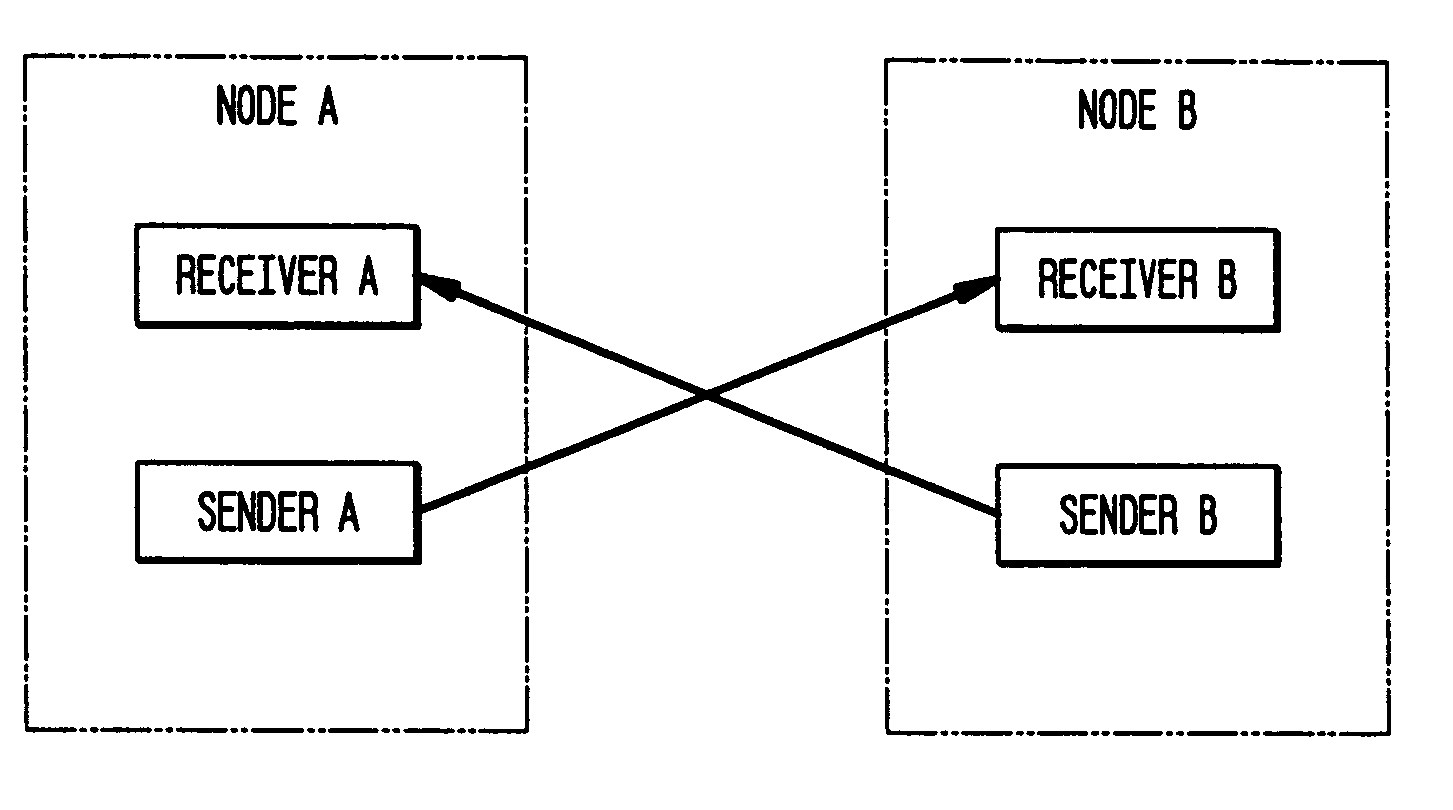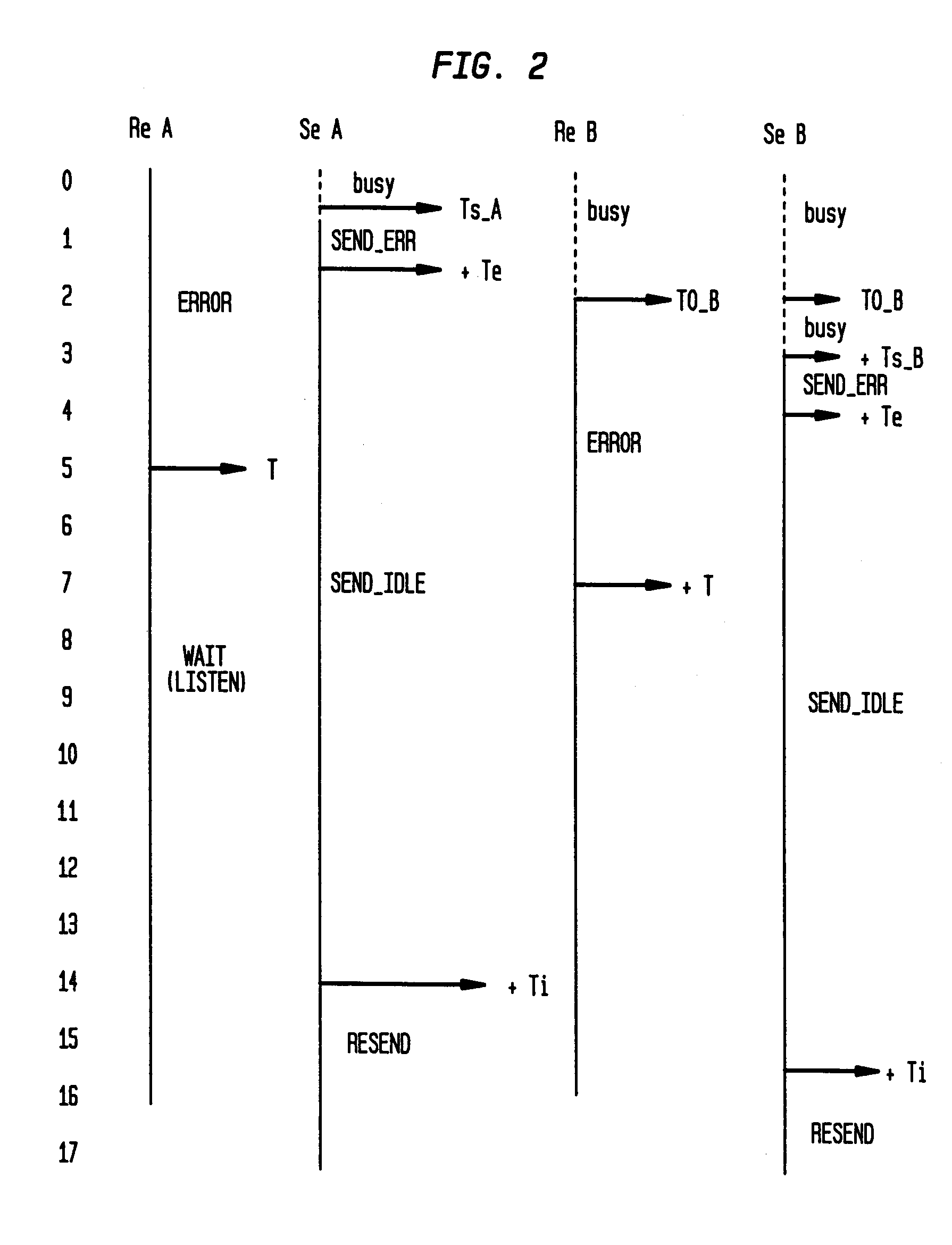Deterministic error recovery protocol
a technology of error recovery and error detection, applied in the field of error recovery, can solve problems such as difficult tasks, errors can occur during communication, and one is exposed to errors in the recovery signals themselves
- Summary
- Abstract
- Description
- Claims
- Application Information
AI Technical Summary
Benefits of technology
Problems solved by technology
Method used
Image
Examples
Embodiment Construction
[0016]FIG. 1 shows two nodes A, B connected with a pair of cables. Receiver A and B are identical. Also sender A and B are identical. For simplicity, assume that the cables transfer one byte of data at each clock cycle. The communication protocol is packet based with byte-long packet headers that must be recognized by the receivers and trailers that contain some type of packet integrity check (such as checksum or CRC). When the receivers receive a special type of byte, called IDLE, they recognize it and do nothing further. If a header byte is not of known type, or if the packet integrity check fails, the receiver goes into an ERROR state. During normal operation, if there are no packets to be sent, the senders transmit IDLE and the receivers are in their normal WAIT state where they listen to incoming traffic.
[0017]If either node gets an error (unknown header type or bad packet integrity check), the protocol of this invention ensures that at some later time both nodes will have thei...
PUM
 Login to View More
Login to View More Abstract
Description
Claims
Application Information
 Login to View More
Login to View More - R&D
- Intellectual Property
- Life Sciences
- Materials
- Tech Scout
- Unparalleled Data Quality
- Higher Quality Content
- 60% Fewer Hallucinations
Browse by: Latest US Patents, China's latest patents, Technical Efficacy Thesaurus, Application Domain, Technology Topic, Popular Technical Reports.
© 2025 PatSnap. All rights reserved.Legal|Privacy policy|Modern Slavery Act Transparency Statement|Sitemap|About US| Contact US: help@patsnap.com



